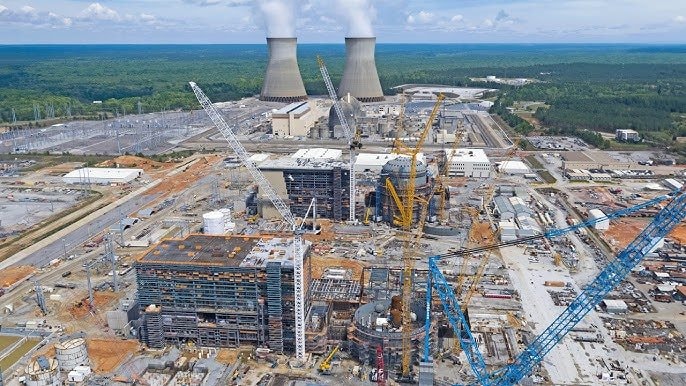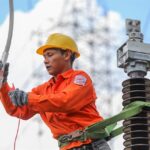Southeast Asia, a region grappling with escalating energy demands and climate change commitments, is witnessing a renewed and growing interest in nuclear power.
Several countries in the region are exploring this low-carbon energy source as a means to diversify their energy mix, reduce reliance on fossil fuels, and power their developing economies. Indonesia and the Philippines are leading this movement, actively laying plans for their first commercial nuclear power plants (NPPs). This signals a potential paradigm shift in the region’s energy landscape.
However, the pursuit of nuclear energy in these two countries entails inherent complexities and significant risks. A tension arises between the ambitions of ensuring energy security and decarbonization, with stark warnings from nature, particularly concerning the region’s geological instability.
Gary Theseira, director of Climate Governance Malaysia, has seriously underscored this delicate balance. He points out that “Indonesia and the Philippines have expressed intentions to venture into nuclear power generation despite their locations in areas with significant tectonically induced instability and high risks of earthquakes and tsunamis.” This expert warning highlights the profound challenges these nations face when ‘tampering with nature.’

Expert warns Indonesia and the Philippines against building nuclear plants while situated on the Ring of Fire.
The drive for nuclear development is not merely about energy; it is intimately tied to national development aspirations. However, for nations perched on the “Ring of Fire” (a string of volcanoes around the Pacific Rim, prone to earthquakes), this path is a high-stakes tightrope walk between achieving developmental goals and latent perils.
Indonesia and the Philippines Embrace Advanced Nuclear Technology
The decision to pursue nuclear in such environments implies a risk calculus where developmental gains are perceived to outweigh, or are hoped to mitigate, the potential for catastrophic natural events.
The strong interest in Small Modular Reactors (SMRs) by both Indonesia and the Philippines may be partly driven by the perception that these newer, smaller designs offer enhanced safety features that could mitigate some of the inherent geological risks.
SMRs are promoted for their higher safety, passive cooling capabilities, and smaller physical footprints. Nations facing high geological risks may view SMRs as an advanced technological approach to “risk mitigation” for nuclear power, making the gamble more palatable.
Indonesia has outlined one of the most robust nuclear development plans in the region. The nation aims to have its first NPP operational by 2032 with an initial capacity of 250 MW, rapidly scaling up to 3 GW by 2035, 9 GW by 2040, and potentially reaching 35-42 GW by 2060 from over 20 NPPs.
This commitment is driven by two pressing imperatives: curbing soaring carbon emissions from its coal-reliant power sector (an increase of 86 million tons CO2 from 2013-2023 in electricity generation) and meeting the massive energy demands of Southeast Asia’s largest economy.
The Philippines, meanwhile, is actively pursuing nuclear energy to enhance energy security, reduce dependence on imported fossil fuels (particularly coal, which accounts for 47% of its energy mix), and address high electricity prices (among the highest in ASEAN).
The impending depletion of the Malampaya gas field further heightens this urgency. The government has announced a Nuclear Energy Roadmap in 2024, targeting its first commercial NPP by 2032 with a minimum of 1,200 MW, scaling up to 2,400 MW by 2035 and 4,800 MW by 2050. An earlier plan (in 2008) envisioned 2400 MWe by 2034.
The Power Experts: Vietnam’s Electricity Prices Reach Parity with China and India
“Energy expert Ha Dang Son shared insights at a seminar on “Power Supply for Growth – Requirements and Solutions” on May 7. He revealed that Vietnam’s electricity prices are currently on par with those in China and India but remain lower than many other countries in the region.”
The Power of Nuclear Energy: Unlocking the Essential Element.
“The development of nuclear power in Vietnam presents critical challenges, and according to Dr. Tran Chi Thanh, President of the Vietnam Atomic Energy Institute (VINATOM), one of the foremost concerns is the availability of skilled human resources. In an exclusive interview with Vietnam Economic Times/VnEconomy’s Phan Anh, Dr. Thanh underscored the importance of cultivating a talented workforce to support the country’s ambitious nuclear agenda.”
The End of Russian Oil & Gas: EU’s Bold Move or Economic Suicide?
The two nations have vehemently opposed previous EU plans to halt energy imports from Russia. This opposition has been a significant hurdle in the EU’s efforts to reduce its reliance on Russian energy sources. With their strong resistance, the EU’s attempts to forge a united front against Russia in the energy sector have been challenging.
The Power Plan Update: Synchronized Implementation for Energy Security
By 2030, Vietnam aims to be among the top 4 ASEAN countries in terms of electricity supply reliability and within the top 3 for electricity access index. Additionally, the country aspires to have 50% of commercial and 50% of residential buildings utilize self-produced and self-consumed rooftop solar power.











![[Photo Essay]: Experts, Managers, and Businesses Unite to Forge a Path Towards Sustainable Green Industry](https://xe.today/wp-content/uploads/2025/07/z678592918-150x150.jpg)


![[Photo Essay]: Experts, Managers, and Businesses Unite to Forge a Path Towards Sustainable Green Industry](https://xe.today/wp-content/uploads/2025/07/z678592918-100x70.jpg)






